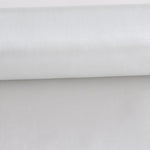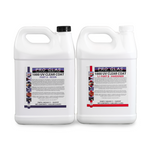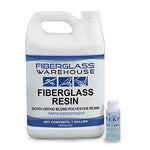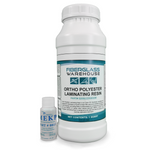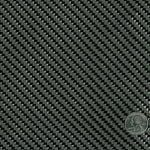You have no items in your shopping cart.

To fully understand the composite processes, it is important to be familiar with the "lingo" used. Over the next couple of weeks we will be discussing commonly used words in the composite/fiberglass world.
Composite- A combination of fiberglass and resin. Fiberglass fabric (including chopped strand mat, carbon fiber, aramid, and roving) is just a limp piece of material until a liquid resin is added. On the flip side, by itself, resin is just a thick gooey liquid. Polyester, vinyl ester and epoxy are the most commonly used resins in a composite. Once the resin is mixed with a catalyst, it is added to the fabric. Enough resin is added to saturate the fabric. If a mold is used, the fabric and resin will conform to its shape. Over the next few hours, the limp cloth and gooey resin will cure and become a solid material that is much stronger than the individual components were before combined. Resin and fiberglass fabric are not to be used individually but instead together.
Fiberglass Reinforcement- The fabric material used to reinforce a resin matrix. This includes woven fiberglass cloth, chopped strand mat, carbon fiber, aramid, woven roving, knitted fabric and unidirectional. The fiberglass chosen determines most of the strength of the finished part. It is important to keep this in mind when choosing which reinforcement will be best for the intended project.
Hand Lay-up- The process of placing (and working) successive plies of reinforcing material (fiberglass) or resin-impregnated reinforcement in position on a mold by hand.
Laminate- A product made by bonding together two or more layers (plies) of material. When talking about fiber glassing in particular it is the bonding of several layers of fiberglass and resin together.
Gel Coat- A quick setting resin, most often a polyester resin, that is applied to the surface of a mold and gelled before lay-up. The gel coat becomes an integral part of the finished laminate, and is usually used to improve surface appearance and bonding. Gel coats come in many colors and will leave a smooth shiny, surface to the finished part. It also adds a layer of protection to the laminate or mold.
Pot Life also known as Working Life- The length of time, at some specified temperature, that a catalyzed resin is workable. A small amount of control can be had when working with resin. More or less (no less than 1% and no more than 2%) MEKP can be added to polyester and vinyl ester resins depending on the amount of time needed to work. Epoxy resin comes in two parts, Part A and Part B. Part B is what hardens the resin. It comes in fast, medium and slow speeds. The temperature of the working area also determines pot life.
Catalyst/Curing Agent/Hardener-The word catalyst is most often used when talking about MEKP (methyl ethyl ketone peroxide). MEKP is added to polyester and vinyl ester resin. It is what causes the chemical reaction that changes the liquid resin to a solid. Curing agent or hardener are words usually used when talking about epoxy resin. As discussed above, epoxies come in two parts, Part A and Part B. Part B is the curing agent or hardener. When mixed together properly, the two parts will cure to a hard finished product. We hope providing definitions for commonly used words in the fiberglass industry is helpful.
If you want to see a comprehensive list of composite/ fiberglass definitions, all in one place, you can check it out here- Composites Glossary.
Save



